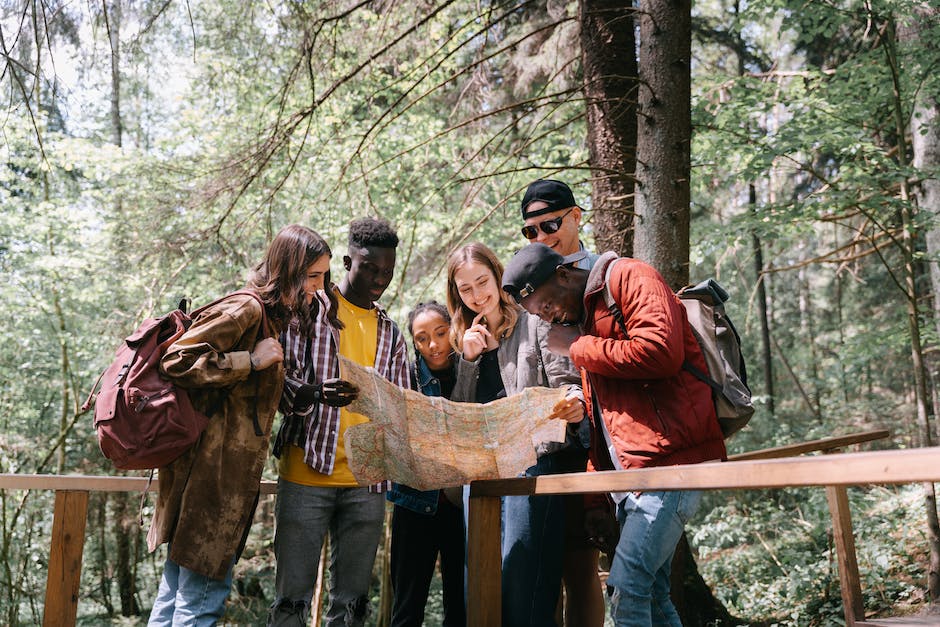Migrant caravans, or large groups of people making their way across continents, often escaping oppression or seeking better life opportunities, are historical phenomena with rich complexities and influences. The journey, fraught with hardship and danger, nonetheless illustrates the resilience and hopeful spirit of the human heart, especially in face of immense adversity. The reasons for these mass migrations, their impact on both the countries of origin and the host countries, as well as the humanitarian response and policies surrounding such phenomena, are essential areas to understand for socio-political context. Each migrant caravan carries its own narrative, intertwined with economic disparity, political instability, conflict, and persecution, which contributes to shaping the world in subtle but profound ways.
The Historical Overview of Migrant Caravans
The Evolution of Migrant Caravans: A Historical Perspective
Migration has been an integral part of human civilization. It is a phenomena as old as humanity itself, with roots tracing back to the earliest Homo sapiens migrating out of Africa around 60,000 years ago. In more recent times, this phenomenon has taken on new forms, adapting to socio-political circumstances, and technology. An intriguing illustration of this phenomenon is the formation and evolution of migrant caravans.
Interactions and negotiations between various species, habitats, and humans have resulted in distinct migratory patterns. Notably, the concept of migrant caravans, in literal terms, is not a new development. Various communities throughout history have migrated en masse. Consider, for example, the historic movement of nomadic tribes such as the Mongols, who migrated in large, organized groups for reasons ranging from resource acquisition to political conquest.
However, the term “migrant caravan” as understood in the contemporary context, crystallizes into distinct visibility in the mid-20th century. Post World War II, the world witnessed mass human displacements that led to organized efforts for mass immigration. The migrant caravan, as we understand it today, embodies desperate attempts of groups escaping dire socio-political and economic crises, often making compelling journeys dominated by human rights concerns.
The evolution of migrant caravans cannot be studied in isolation, but rather within the framework of geopolitical transformations. In the late 20th and early 21st centuries, discernible patterns of distressed migration from areas ravaged by conflicts and economic turmoil tend to pivot toward more developed regions, forming large-scale migrant caravans. An epitomic example of this is visible in the Central American migrant caravans heading toward the United States.
Regrettably, these precarious journeys are fraught with dangers and hostility. As compared to past instances of organized migration, current-day migrant caravans face a unique set of challenges. This includes government legislations, heightened border securities, geopolitical disputes, and public backlash. The resultant impact on the individuals involved is considerably grave, and is a stark departure from the relative safety of earlier organised migratory movements.
Technological advances have also played a critical role in the evolution of migrant caravans. Social media platforms and cellular communication have become potent tools for organization and dissemination of information amongst prospective migrants. These platforms have catalyzed the creation and coordination of contemporary migrant caravans, in sharp contrast to the ancient migratory groups that relied heavily on physical signals and word-of-mouth.
Migrant caravans thus pose an interplay of historical constants and variables. While mass migration is as old as history itself, the modes and challenges are continually morphing, rendering the phenomenon a dynamic aspect of human society. The caravan of migration continues to traverse the continuum of time, influenced by an array of geopolitical, socio-economic, and technological factors, serving as a poignant epitome of human resilience and adaptation.

Underlying Causes of Migrant Caravans
Pivoting from a comprehensive historical understanding of the origins and evolution of migrant caravans, it is beneficial to excavate deeper into the myriad factors that catalyze their formation with an especial focus on socio-economic and political underpinnings. What transpires as a macrocosm of human resilience to strife and struggle, the formation of migrant caravans is deeply rooted in multiple cascading dimensions of social, economic, and political scenarios.
First and foremost, the syndrome of poverty, essentially serving as a keystone in understanding migration patterns, undeniably plays a formidable role in catapulting the formation of migrant caravans. Economic destitution, often intertwined with unyielding geographical limitations, stratified social systems, and escalating underemployment, coalesce to create untenable conditions for many, incentivizing mass migration. This exacerbated economic differentials between regions irrepressibly motivate disenfranchised individuals and families towards more prosperous entities, thereby instigating migratory movements.
However, to simply equate mass migration to economic disparities would be a myopic analysis, thus underscoring the importance of integrating the socio-political component into the narrative. Perennial occurrences of political instability, conflict, and governance failures yield compelling catalysts for the genesis of migrant caravans. Inner turmoil, be it of religious, ethnic or political nature, frequently manifests in adrenaline-infused civil wars, persecutions, and oppressive regimes leading to overt and structural violence against certain demographics. Consequently, these groups seek refuge, asylum, and, ultimately, safer environs, culminating in organized movements such as migrant caravans.
Paralleling these push factors, an interesting phenomenon of pull factors also warrants examination. Developed nations, often construed as lands of opportunities, exercise an undeniable gravitational pull, enticing people from economically disadvantaged regions. Promises of superior job opportunities, higher living standards, and social benefits together align in sequencing a colorful tapestry of a better lifestyle, serving as a potent lure for potential migrants.
Adding another layer to the complexities surrounding migrant caravans are the politico-legal repercussions of immigration and asylum-seeking laws. Policies concerning migrant rights, border controls, and regional agreements profoundly influence the trajectory of the caravan journey. Judicial activism or reluctance, in tandem with the drapery of political will, significantly contributes to the final destinations and makeshift settlements seen among migrant caravans.
Lastly, the role of international dynamics should be factored into this analysis. In an era where international diplomacy and global politics are closely tied into national interests, refugee absorption becomes a complex negotiation of humanitarian considerations, national security, demographic dynamics, and geopolitical scenarios. International bodies, non-government organizations, and aid agencies, thus, become vital in mediating the path and fate of these caravans.
In summation, the formation of migrant caravans is an intricate tapestry woven by multiple, interconnected threads of socio-economic and political factors. It presents an unfolding narrative of human persistence in the face of adversity, a journey languishing under the shadows of uncertainty, ornamented sometimes with moments of triumph against abysmal odds – a topic that continues to warrant rigorous academic and scientific exploration.

Implications of Migrant Caravans
Delving deeper into the investigations surrounding migrant caravans, it’s crucial to unearth and acknowledge the resultant impacts of these mass migrations on the countries or regions from where the caravans originate, as well as upon the destination points that attract these particular migratory movements. Analysis of these impacts unveils a complex web of interrelated repercussions, extending from demographic changes to economic recalibrations and civic recalibrations, within both departure and arrival locales.
Initially, the thunderous footfalls of these migrant caravans echo most profoundly in the regions of origin. Departure locations, most often beleaguered by cascading adversities, experience a significant reduction in the population capable of contributing productive labor. These regions could see both positive and negative implications. A potential benefit could be a decrease in competition for scant resources and reduced pressure on social services. On the other side, the exodus of largely young and active individuals can exacerbate the demographic imbalance, enhancing the burden on an aging population left behind. This phenomenon, known in academic circles as ‘Brain Drain,’ could impede infrastructural growth and sustainable development, given the reduction in human capital.
Moving onto the receiving end of migrant caravans, much has been studied about the impacts on the sites of destination. An immediate outcome is the demographic diversification that occurs within the host regions, which may augment cultural richness and societal plurality. Economically, migrant inflows can fill labor market gaps, particularly in sectors or industries where domestic labor is limited or unwilling to participate, such as the agricultural or service sectors in some developed nations.
Nevertheless, the arrival of substantial immigrant numbers simultaneously poses substantial challenges. Immediate strains are often placed upon public services and infrastructure, with health, housing, and education sectors typically witnessing increased demand. Public sentiment may teeter towards discontent when native citizens perceive competition for such resources, occasionally leading to social tension and unrest.
Moreover, the political landscape of the host nations may undergo significant alterations in response to migrant caravans. The inclinations of lawmakers and public policy could veer towards both extremes, from fostering more inclusive immigration policies to insisting on stricter border controls and demanding assimilation into existing societal frameworks.
It is further essential to extend analytical gaze beyond the immediate to the long-term implications. For instance, remittances sent by immigrants to their places of origin can aid economic recovery and social development over time. Meanwhile, the host nations could benefit from the eventual integration of immigrants into the demographic framework, boosting social diversity and economic dynamism.
In summation, the impacts of migrant caravans on places of origin and destination are multi-faceted and complex, cutting across demographic, socio-economic, and political domains. It underscores the necessity for a nuanced understanding of these impacts, shunning over-generalizations and allowing for more effective decision-making in migration management, policy formation, and humanitarian aid distribution.

Humanitarian Response and Policy Considerations
A prominent humanitarian concern associated with migrant caravans is the significant risk of abuse or exploitation encountered by vulnerable people traveling in these groups: a reality often driven by desperation and lack of alternatives.
Additionally, the caravans’ collective and public nature amplifies the chances of exposure to human traffickers, who typically prey on despair, lack of legal pathways, and inadequate services.
Disturbingly, even recognition of these risks often fails to deter potential migrants, underlining the severity of the environments from which they seek removal.
Confronting these challenges necessitates meticulous coordination among nations, international bodies, non-governmental organizations, and civil society, leading to complex response measures.
These may involve provision of immediate humanitarian assistance, legal aid, campaigning for sustained support, and advocacy for policy amendments that facilitate safe and legal migration avenues.
Regarding policy considerations, the primary impetus rests on the creation of comprehensive migratory policy frameworks that effectively address root causes of migration, rather than focusing purely on treating its symptoms.
Factors such as poverty, political unrest, environmental degradation, and diminishing socioeconomic opportunities must be cogently adhered to in these policy endeavours.
Such reactive or short-term policies often culminate in more sophisticated and dangerous smuggling routes, increasing vulnerability for hopeful migrants.
A broader humanitarian perspective also emphasizes integrating the migration phenomenon into long-term development strategies.
These can involve improving living conditions in origin countries, supporting integration in destination nations, and facilitating collaboration in regions of transit.
Simultaneously, a reformulation of the narrative surrounding migrant caravans is of substantial importance.
The demystification of collective migration and dismantling of divisive rhetoric plays a pivotal role in building comprehensive policy solutions and fostering environments conducive to the respect of migrant rights.
The fostering of international solidarity, global compacts on shared responsibility, and increased humanitarian funding in response to migrant caravans can aid in moving towards more humane and sustainable solutions.
Lastsly, an intersectional perspective further nuances understanding in this dynamic affair, as migrant demographics vary widely in terms of age, gender, and health status.
Building comprehensive responses and policies that embrace this diversity, prioritizes inclusion, proffers protection, and upholds fundamental rights should form the foundation of strategies to address the multidimensional needs and concerns of migrant caravans.

Photo by brookecagle on Unsplash
The Future Outlook of Migrant Caravans
The Future Outlook of Migrant Caravans amid a Changing Global Landscape
As the world continues to undergo change at an unprecedented pace, it becomes essential to critically assess the future possibilities of significantly impactful phenomena, among which, migrant caravans present a compelling study. Harnessing the combined insights derived from historical patterns, contemporary socio-political contexts, evolving technologies, and ecological challenges, this analysis aims to draw a plausible objective forecast on the future of migrant caravans.
The interplay between climate change and migration surfaces as a prominent area of concern. With an increase in environmental calamities and a distressing escalation of ecological volatility, ecological migrants could join the ranks of economic and political migrants in caravans. Uninhabitable living conditions, scarcity of resources, and environmental degradation could result in unprecedented migratory waves impossible to disregard, thereby demanding enhanced international co-operation and rigorous policy inclusions to accommodate ecological displacement.
The advancement of artificial intelligence (AI) and automation on the global labor landscape also threads into this complex fabric. As these technologies replace human capital in various sectors, the enticements of industrial countries might wane, forcing potential economic migrants to explore alternative routes or to stall the migration process altogether. On the flip side, burgeoning digital economies might also create new labor market niches attracting tech-savvy migrants.
As nations grapple to balance economic stability with a strong working force, changing demographic profiles posed by aging societies, especially in developed nations, will significantly influence both the demand and reception of migrants. This demographic shift, alongside a disruptive global economic uncertainty, might necessitate the need for a diversified labor force, with migrant caravans potentially contributing to this demographic diversification.
Simultaneously, the escalation of nationalist sentiments and the resurgence of populist forces globally might stiffen resistance against the influx of migrants, thereby influencing legislations and asylum laws. Such changes could further reshape the dynamics of migrant caravans, particularly in terms of their routes, destinations, and the overall migratory experience.
Finally, the global community’s capacity for empathy and solidarity in the face of human suffering, and its willingness to address the structural inequities underpinning forced migrations, will undoubtedly determine the course the migrant caravans take in the future. Recognition of the shared responsibility towards our fellow humans and working toward creating equitable global socio-economic structures might shape a future where forced migration is not the last desperate resort, but a conscious, fair choice made with dignity.
In sum, while outlining the future of migrant caravans poses complex predictive challenges, it is certain that the interplay of climate change, technology, shifting demographic profiles, resurgent nationalism, and global socio-economic structures will play pivotal roles in shaping the same. To unravel these complexities, a comprehensive, multidimensional policy approach, balancing immediate humanitarian responses with long-term development strategies, becomes imperative. This policy approach, partially enabled by a reframed narrative around migrant caravans and the spirit of international solidarity, could spearhead a future where migration is a choice made with security and respect, rather than a life-threatening necessity.

With the unfolding socio-political dynamics, looming threats of climate change, and potential conflict scenarios, migrant caravans are likely to remain a significant global issue. An evolved understanding of this phenomenon is then, not just a humanitarian imperative, but also a socio-political necessity. A deeper exploration into the causes, implications, and potential future trends can help in formulating better policies, refining humanitarian interventions, and shaping a more informed, compassionate discourse around migrant caravans. As we navigate the complexities of our shared human journey, may we hold space for these diverse narratives, recognizing that every step taken in a migrant caravan is a testament to human resilience and an affirmation of our collective longing for a world embracing freedom, dignity, and justice.

Matt Smith is a seasoned journalist and author whose expertise spans across the dynamic realms of Politics, Gadgets, Gaming, and a plethora of general interest topics. With a Master’s in Political science and tech pedigree shaped in Silicon Valley, Matt brings a wealth of knowledge and a critical eye to everything he writes.
Politics: Matt offers sharp political commentary, drawing from his experience as a political analyst and his academic rigor.
Gadgets: His tech insights are grounded in real-world experience, having been on the front lines of innovation with a degree from Caltech.
Gaming: A respected voice in gaming, Matt’s reviews and trend analyses are a testament to his deep involvement in the gaming community.
General Topics: From science to culture, Matt’s writing spans a broad spectrum, engaging readers with a blend of expertise and relatable prose.
Engage with Matt’s compelling content for a fresh perspective on the issues at the forefront of today’s discourse.

